Labradorite
Labradorite is an unusual mineral with an amazing optical effect, correctly known as labradorescence. At certain angles, light refracts from inclusions or cracks under the surface of the stone, causing a colourful glow.
Colours can include yellow, green, blue, aqua, gold, and purples. It is almost always sold polished, as the colour comes out better when the stone has been cut and polished to display it.
Labradorite is very popular with modern jewellery makers. Numerous Eastern cutters make some quite large cabochons, which are great for wire wrapping. In rare cases, Labradorite is faceted – but this is absolutely not the norm.
Showing all 15 results
-
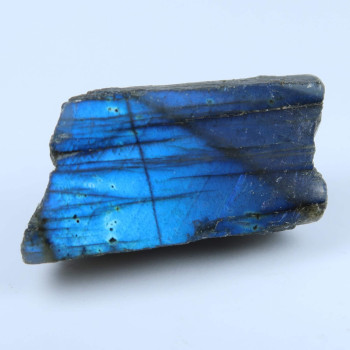
Labradorite – polished slices
Price range: £3.00 through £5.00 -
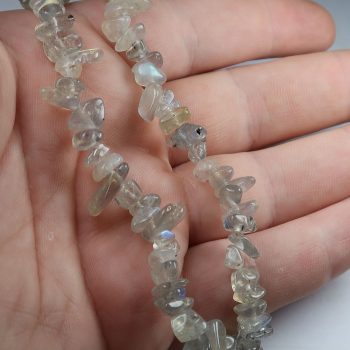
Labradorite bead strands
Price range: £2.00 through £5.00 -
Sale!
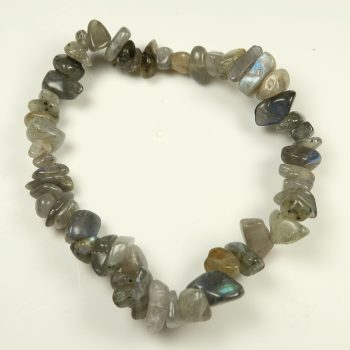
Labradorite Bracelets
Price range: £1.35 through £2.50 -
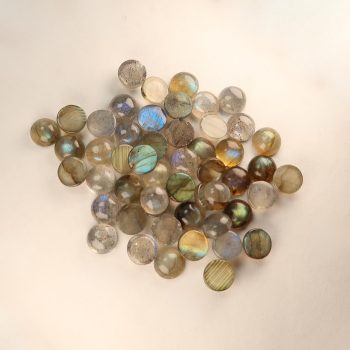
Labradorite Cabochons
Price range: £1.00 through £10.00 -
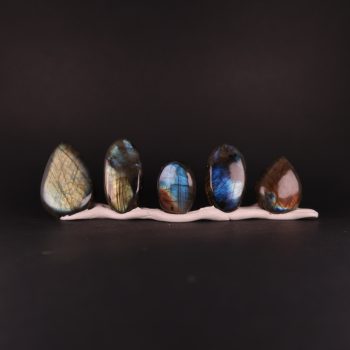
Labradorite Cabochons (Parcels)
£7.50 -
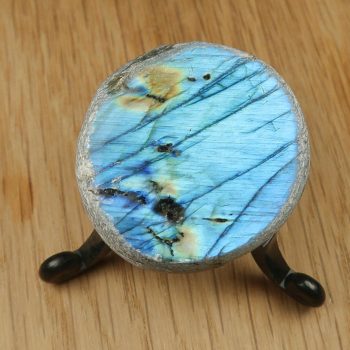
Labradorite Emma Eggs
Price range: £8.00 through £10.00 -
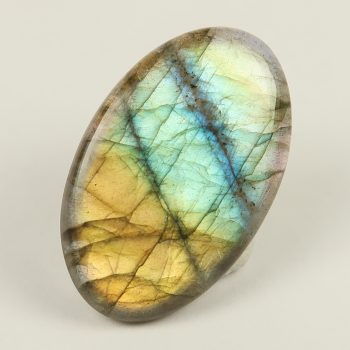
Labradorite Freeform Shaped Cabochons
Price range: £2.00 through £10.00 -
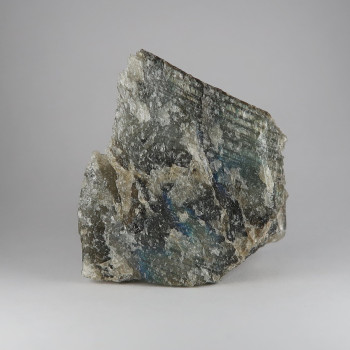
Labradorite from Antsohamamy labradorite quarry, Madagascar
£5.00 -
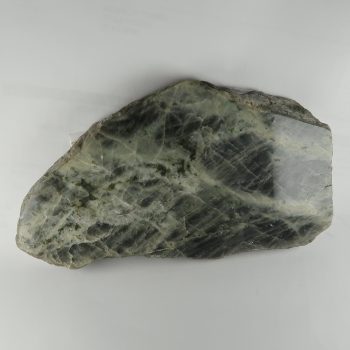
Labradorite from Paul Island, Labrador, Canada
£75.00 -
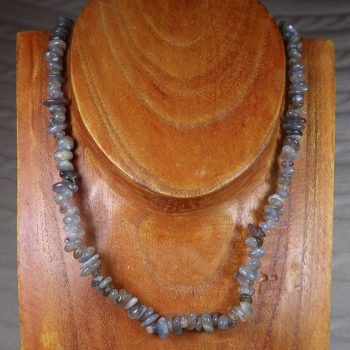
Labradorite necklaces
Price range: £3.95 through £6.00 -

Labradorite obelisks
Price range: £4.00 through £5.00 -
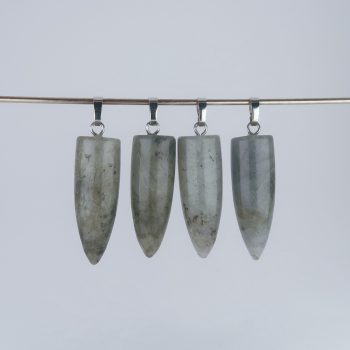
Labradorite Pendants
Price range: £1.00 through £2.00 -
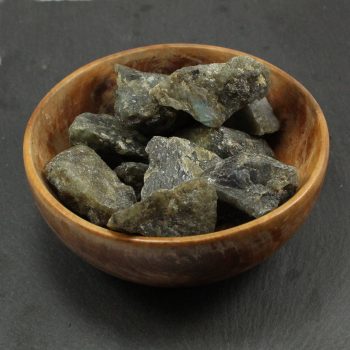
Labradorite Specimens / Rough
£4.00 -
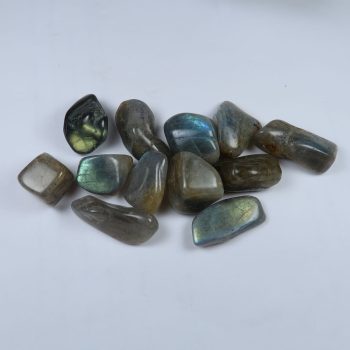
Labradorite Tumblestones
Price range: £1.00 through £4.50 -
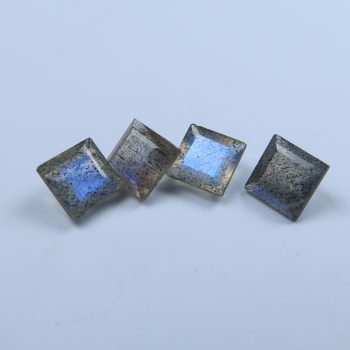
Labradorite, Faceted
Price range: £1.95 through £2.95
Appearance
Labradorite is a mineral which occurs in a few different colours, most commonly a dark green-grey.
It has a flash of colour referred to as labradorescence, which can result in bright flashes of colour, most often greens, blues, and yellows. There is more information on the varieties of Labradorite below, in our Mineralogy section.
Uses and History
Labradorite was first discovered in Labrador, Canada, which is where the name comes from.
The material was apparently discovered by a Morovian missionary in 1770, but not much information about this event is available.
Labradorite is almost exclusively used as a decorative stone. It is very popular with jewellers, especially in the ‘wire wrapping’ style. It is also cut, carved, and polished – in some cases, it is used for larger decorative pieces, like worktops.
Locales
Africa:
- Madagascar – Tulear Province
Asia:
- Myanmar – Mandalay Region
Europe:
- Finland – South Karelia (Spectrolite)
- Ukraine – Zhytomyr
South America:
- Brazil – Minas Gerais
Antarctica:
Australia and Oceania:
- Australia – New South Wales
North America:
- Canada – Labrador – type locale!
- Canada – Quebec
- USA – New York – Adirondack Mountains
- USA – Ohio
- USA – Texas
- USA – Utah
Mineralogy
It’s chemical formula is (Ca,Na)Al1-2Si3-2O8.
- Labradorite is usually a dark green-grey, or dark grey stone, with a bright flash of colours – usually blues and greens, with occasional yellow-gold and sometimes other colours.
- Spectrolite has a darker base colour, which causes a larger range of colours than most other Labradorite. Spectrolite is only found in Finland – although many sellers refer to any Labradorite with a broader colour spectrum as Spectrolite.
- Golden Labradorite / Bytownite is a transparent variant with a golden colour – it is usually sold tumbled or cut.
- Andesine is the name given to an artifically treated Feldspar mineral.
Larvikite is a grey-black stone with thumbnail sized flashes of white and blue, so it should be relatively easy to distinguish from the more colourful Labradorite. If you are in doubt, Larvikite does have a slightly lower specific gravity.
Hazards and Warnings
Almost all rocks, minerals (and, frankly, almost all other substances on earth) can produce toxic dust when cutting, which can cause serious respiratory conditions including silicosis.
When cutting or polishing rocks, minerals, shells, etc, all work should be done wet to minimise the dust, and a suitable respirator or extraction system should be used.
Translations
Arabic:
- اللابرادوريت
Indonesian:
- spektrolit
English:
- labradorite
- spectrolite
Russian:
- спектролит
- Лабрадорит
Japanese:
- ラブラドライト
- スペクトロライト
- ラブラドル長石
Spanish:
- labradorita
- espectrolita
German:
- labradorit
- Spektrolit
- Carnatit
- Mauilit
- Radauit
- Silicit
- Spectrolith
- Spektrolith
Korean:
- 조회 장석
- 스펙트로 라이트
Gujurati:
- લેબ્રાડોરાઇટ
Mandarin Chinese:
- 拉長石
- 光譜石
- 拉长石
- 变彩拉长石
Urdu:
- لیبراڈورائٹ
